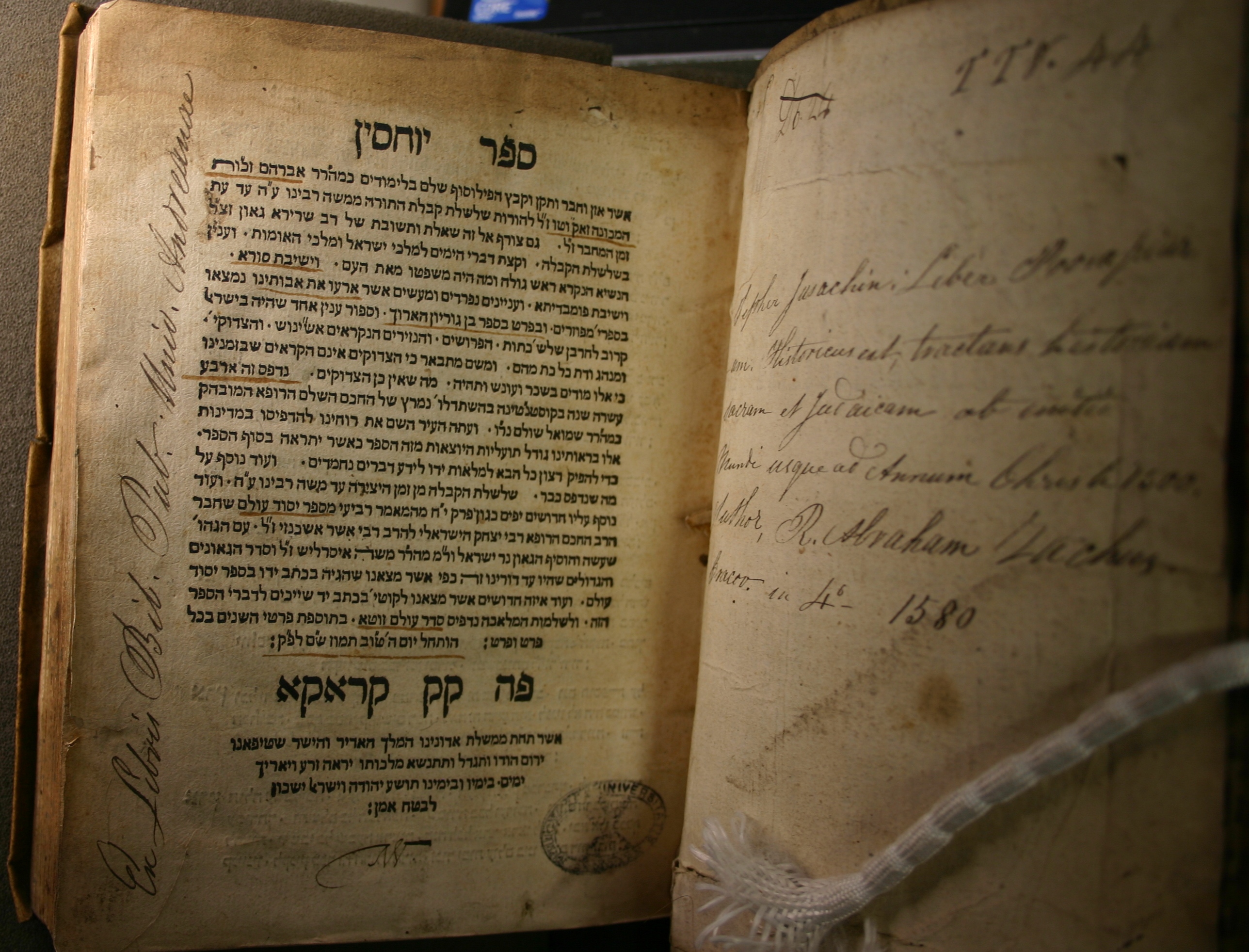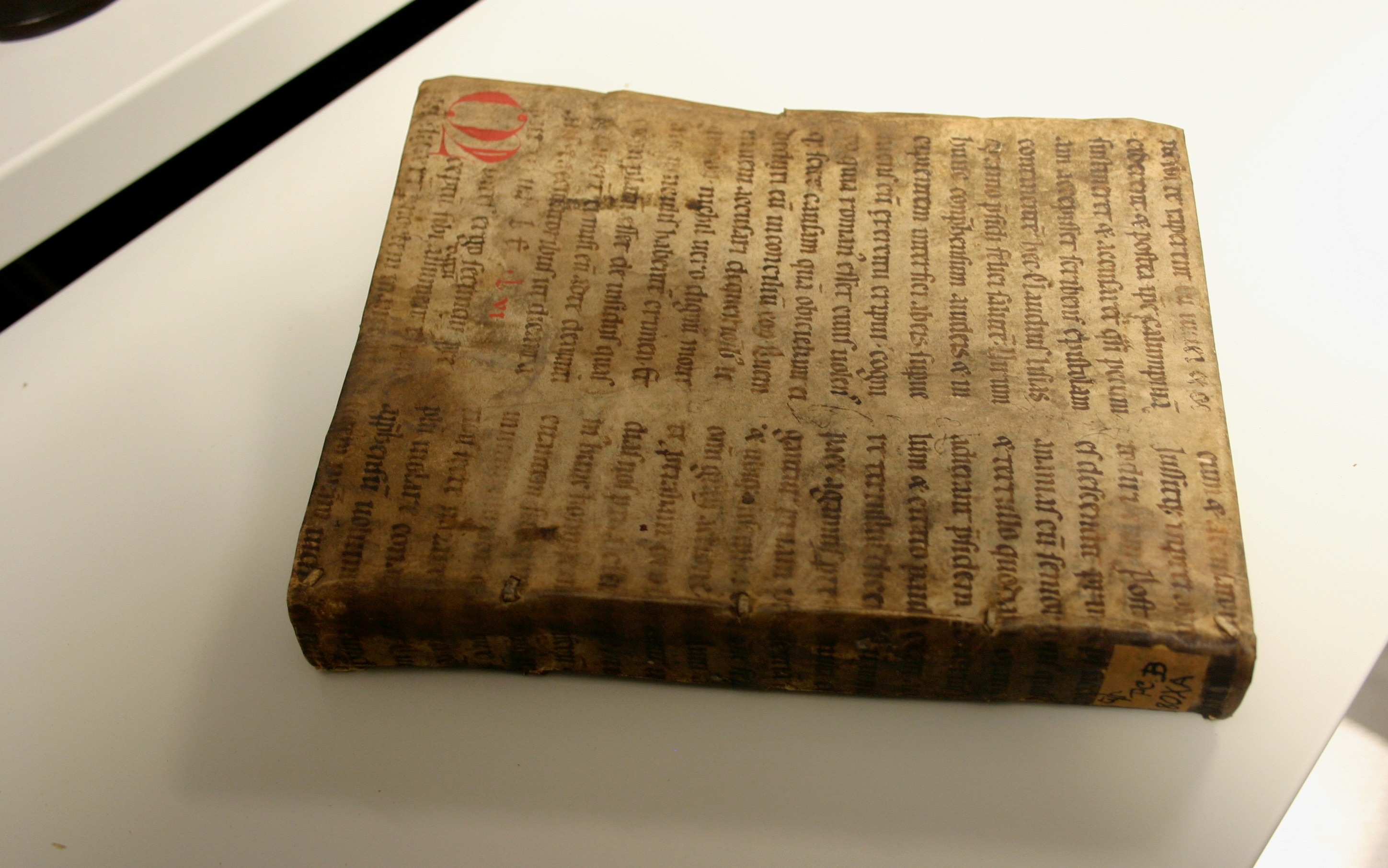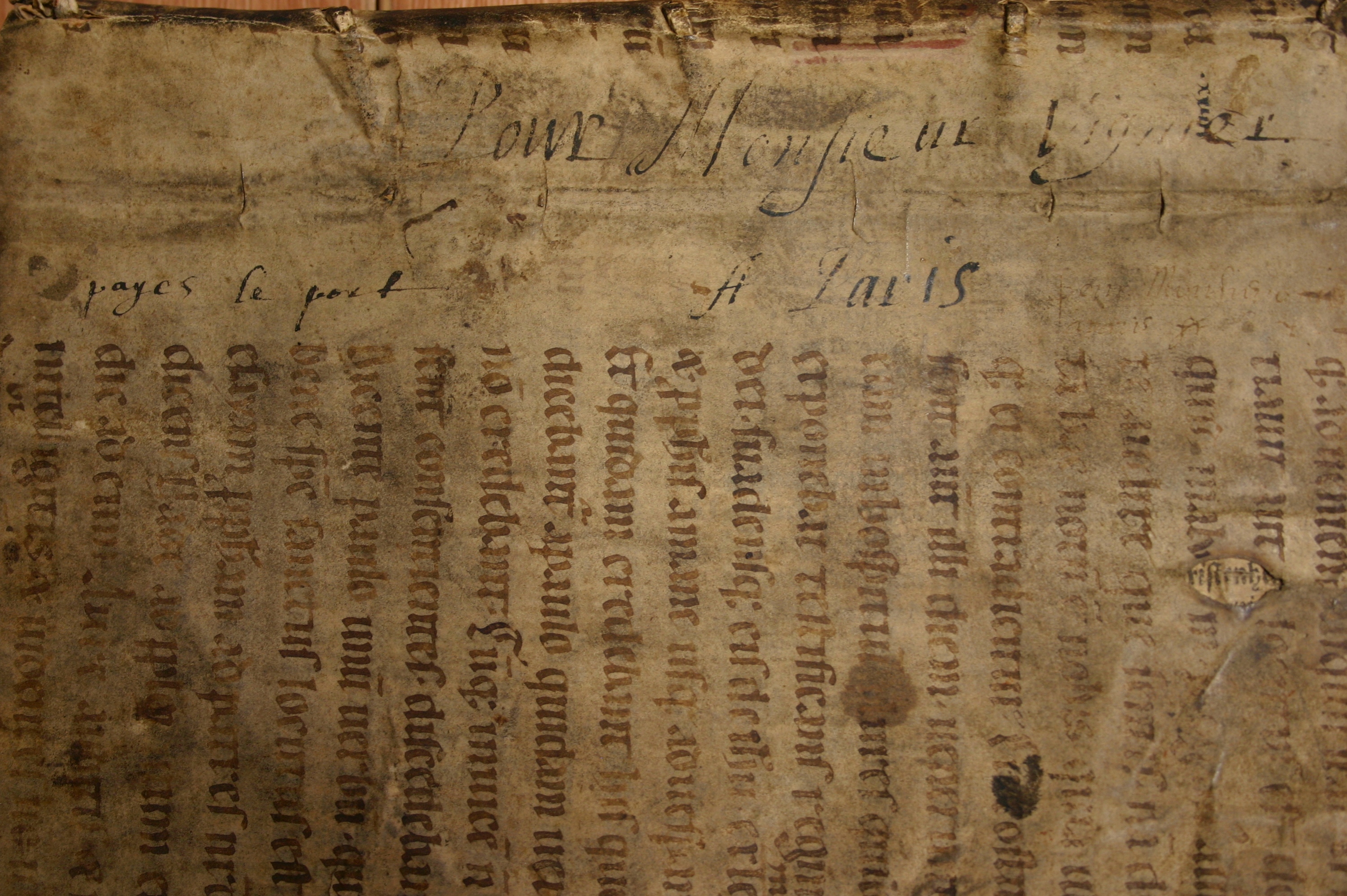52 Weeks of Fantastic Bindings, Week 30: 16th century Hebrew text bound in a leaf of a 12th or 13th century manuscript

This week’s binding post caught my eye as I was reshelving some items. As you can see in the picture above, this book stands out a bit: it’s quite a common to find leaves of manuscripts used as fly-leaves and binding waste, but, especially in our collection, it’s not so common to find a book bound entirely in a leaf of a manuscript.

After initial investigation, I also found that this book was also one of the last items in the Typographical Collection that remained to be catalogued. It turned out that this is the only Polish book in the Typographical collection, and one of the few early books that we have in Hebrew (probably one of the reasons it hadn’t been catalogued). Luckily, as I don’t read Hebrew, there was a hint as to what the text was in 19th century Latin on the front (back) paste-down. I was then able to conduct some searches and identified this book as the 1581 Kraków printing of Sefer Yụḥasin (ספר יוחסין) by Abraham ben Samuel Zacuto, with additional texts by Moses ben Israel Isserles, Isaac ben Joseph Israeli and Abraham ben Mordecai Farissol.

This book was probably bound shortly after its printing in what has now been identified as a bifoliate leaf of a 12th or 13th century Biblical manuscript, which begins with Acts verse XXIII chapter 25 on the front cover. The manuscript was written in two columns in a clean Carolingian hand, with large initials in red. The fold of the manuscript, with the sewing holes, is visible on the front cover.

There is contemporary marginalia throughout in Latin, but the only hint as to where this book might have been before coming to St Andrews is an inscription in an 18th or 19th century hand on the front cover: “Pour Monsieur Vignier a Paris”.
–DG
Ne s'agit-il pas de "Monsieur Vignier" ?
It is indeed, thank you for spotting my error! -DG